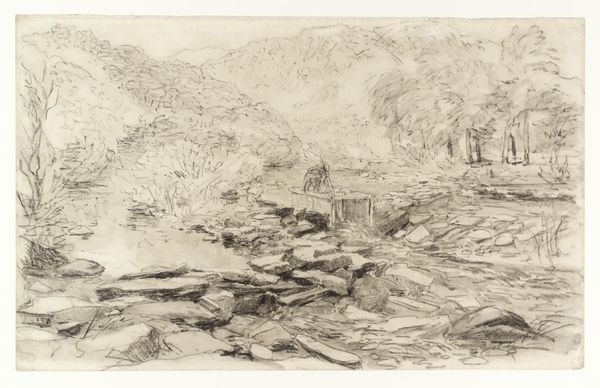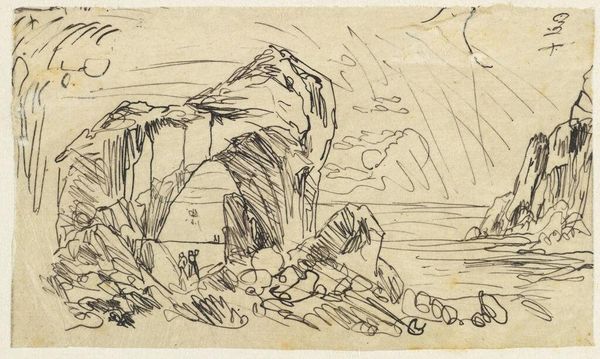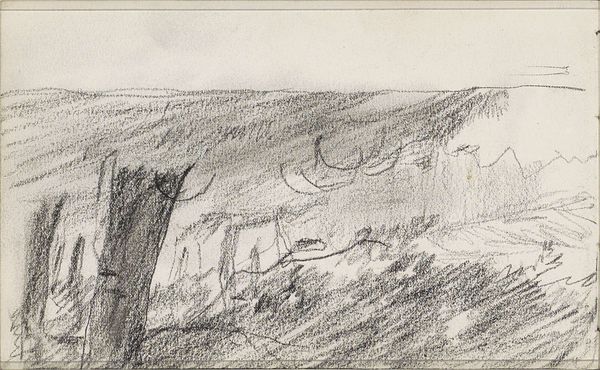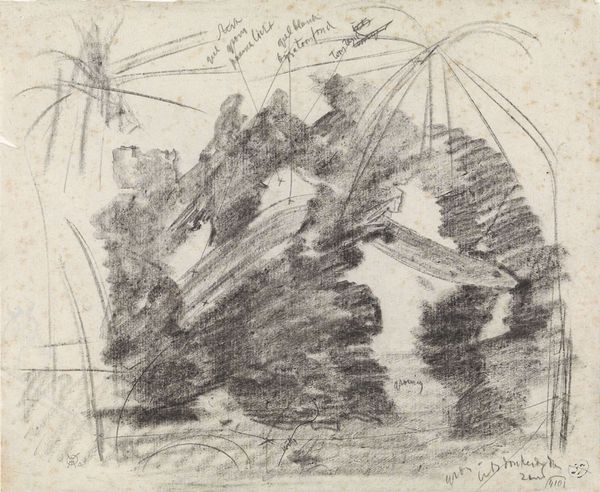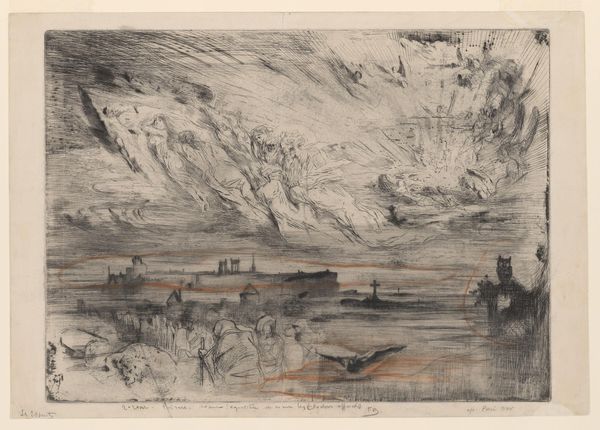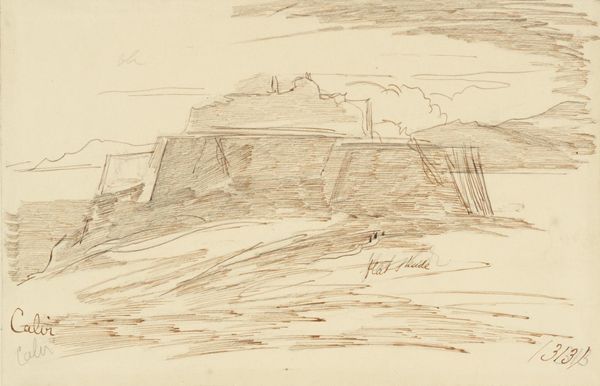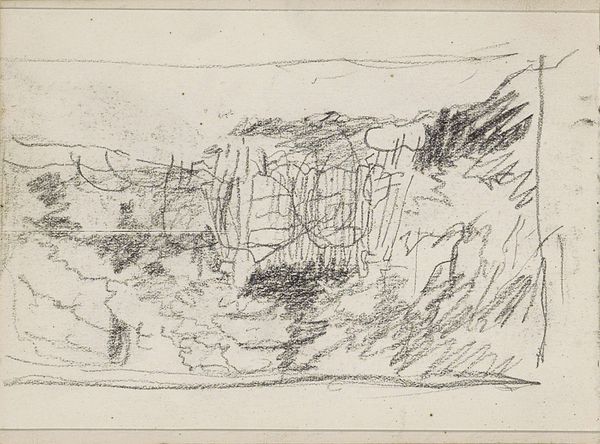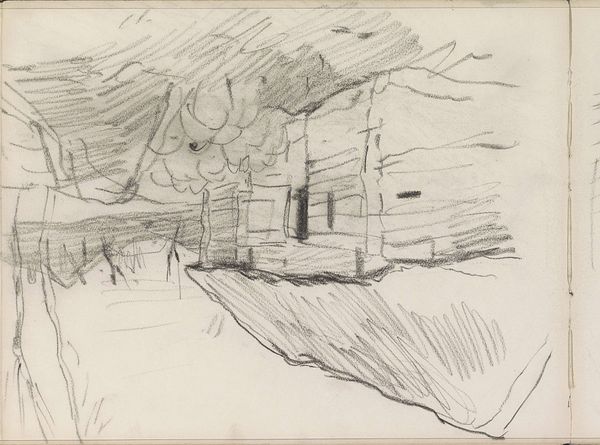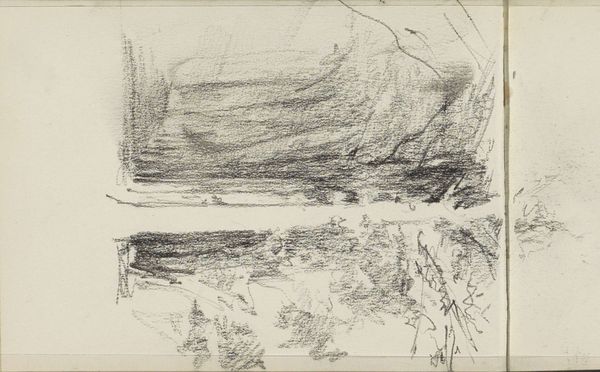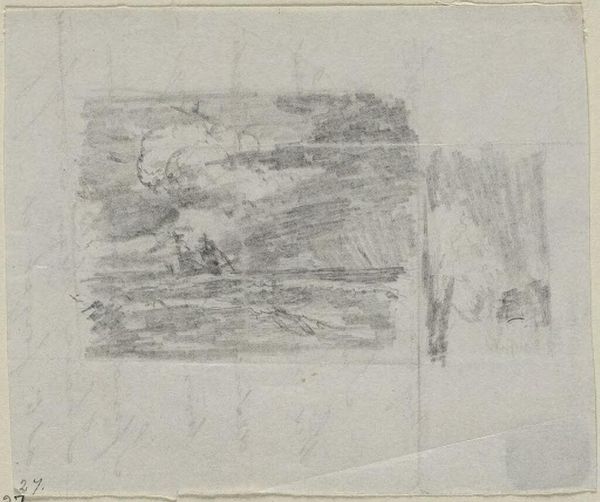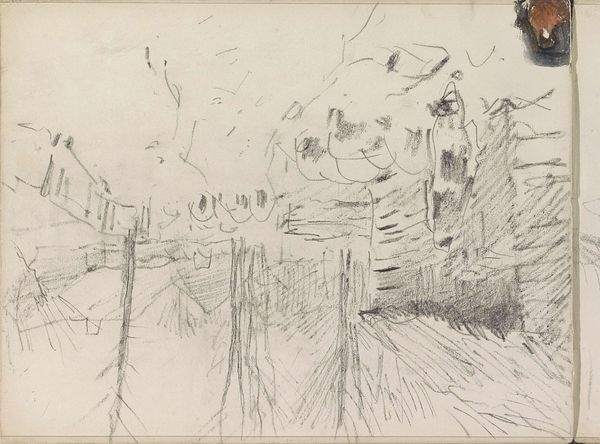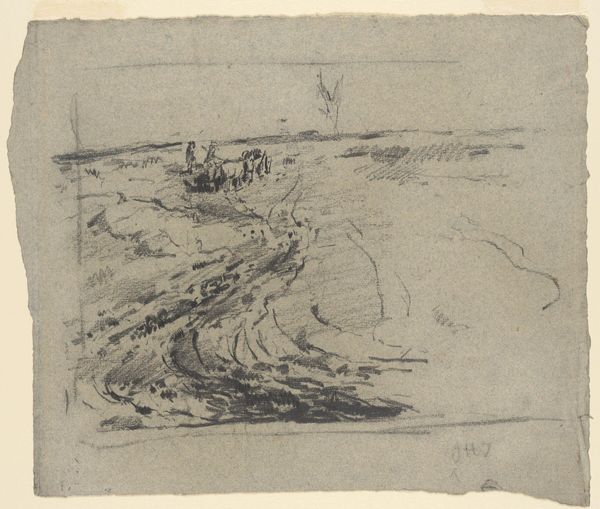
print, etching, graphite
#
cubism
# print
#
pen sketch
#
etching
#
landscape
#
geometric-abstraction
#
graphite
#
cityscape
#
modernism
Dimensions: plate: 23 x 28.5 cm (9 1/16 x 11 1/4 in.) sheet: 24.1 x 29.2 cm (9 1/2 x 11 1/2 in.)
Copyright: National Gallery of Art: CC0 1.0
Curator: John Marin’s etching, "Weehawken, No. 1," created in 1915, offers a dynamic cityscape rendered with remarkable energy. What’s your initial take on this piece? Editor: It strikes me as frenetic. The sheer density of lines creates a vibrating effect. It’s almost as if the city itself is alive, pulsating. I’m drawn to how this technique conveys a sense of instability. Curator: That's insightful. Marin, associated with early American modernism and especially the Stieglitz circle, was deeply invested in capturing the dynamism of urban life, moving beyond straightforward representation. Weehawken, across the Hudson from Manhattan, provided Marin a vantage point to express the city’s chaotic vitality through Cubist-influenced abstraction. Editor: You know, thinking about the etching process itself, the repetitive action of scoring these lines into the metal plate feels like a physical translation of that urban rhythm. The labor intensifies the sense of frantic activity present in the image. What materials did he use exactly? Curator: The work employs etching, with some evidence of graphite and pen sketch. Marin's choice of printmaking also democratizes the image; it can be disseminated widely, connecting a larger audience to his vision of modern America. We also need to think about its public role. Editor: Right, a much wider distribution than, say, a unique painting. Considering the etching process alongside its geometric abstraction, it bridges craft and art in ways that encourage us to challenge formal conventions of value. Each strike to the plate feels crucial. It highlights the tactile and the labor. Curator: Absolutely, and beyond its physical creation and dissemination, this piece challenges established artistic hierarchies by elevating a commonplace scene into the realm of high art. Marin captures the experience of modernity. It makes one wonder about the social forces and experiences reflected by it. Editor: Considering the etching's graphic intensity, I appreciate the emphasis on the process of production itself as part of its meaning. Curator: I find myself now considering its role in shaping perceptions of urban dynamism, and its ongoing public engagement. Editor: It underscores that even in mass production, there's artistry, labor, and material choices contributing to the final expression.
Comments
No comments
Be the first to comment and join the conversation on the ultimate creative platform.
